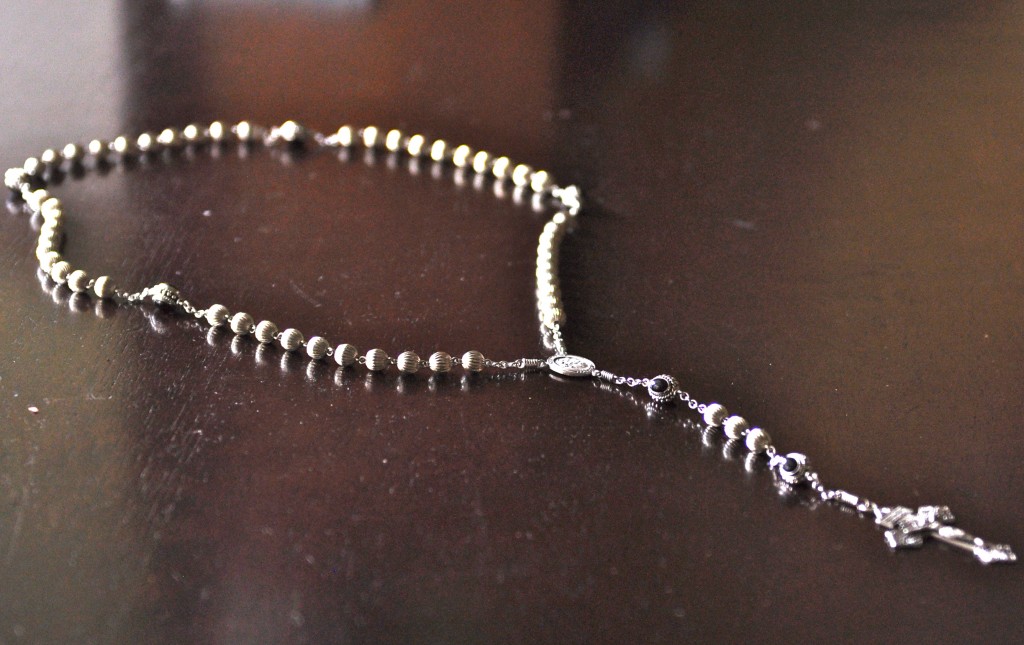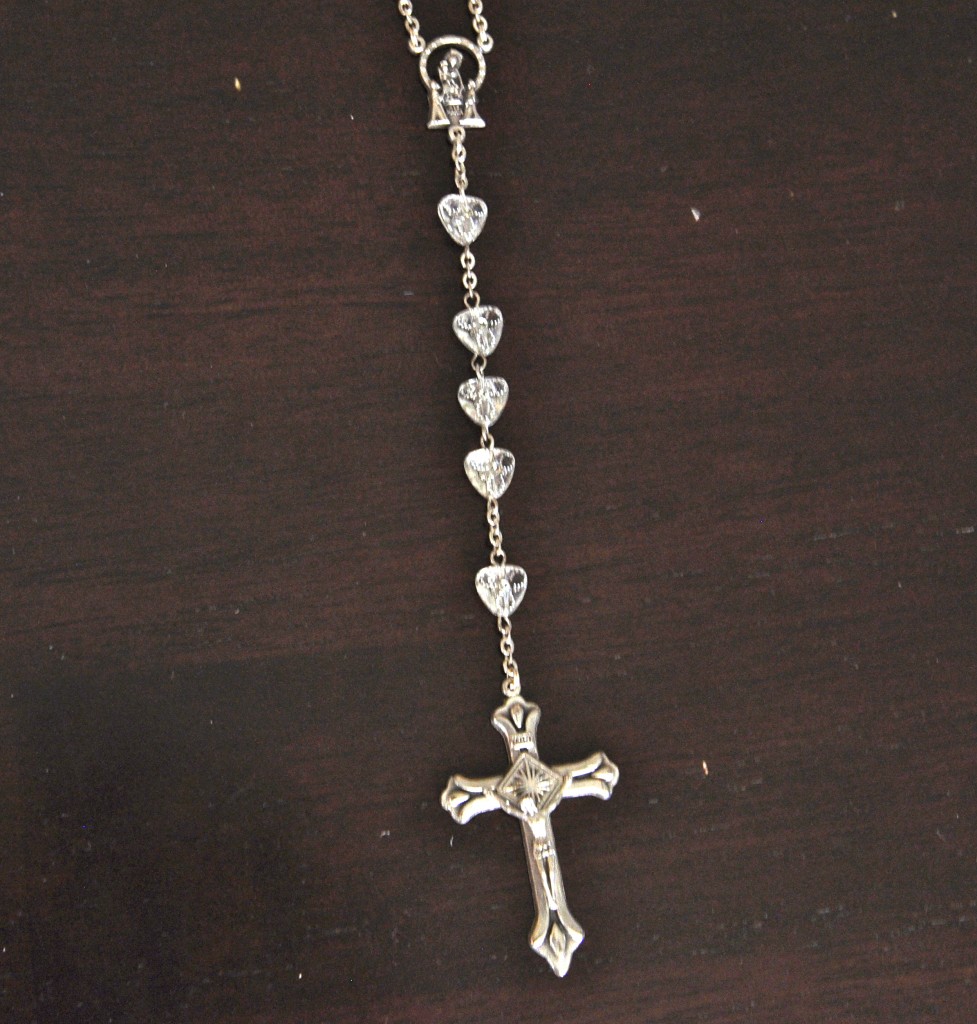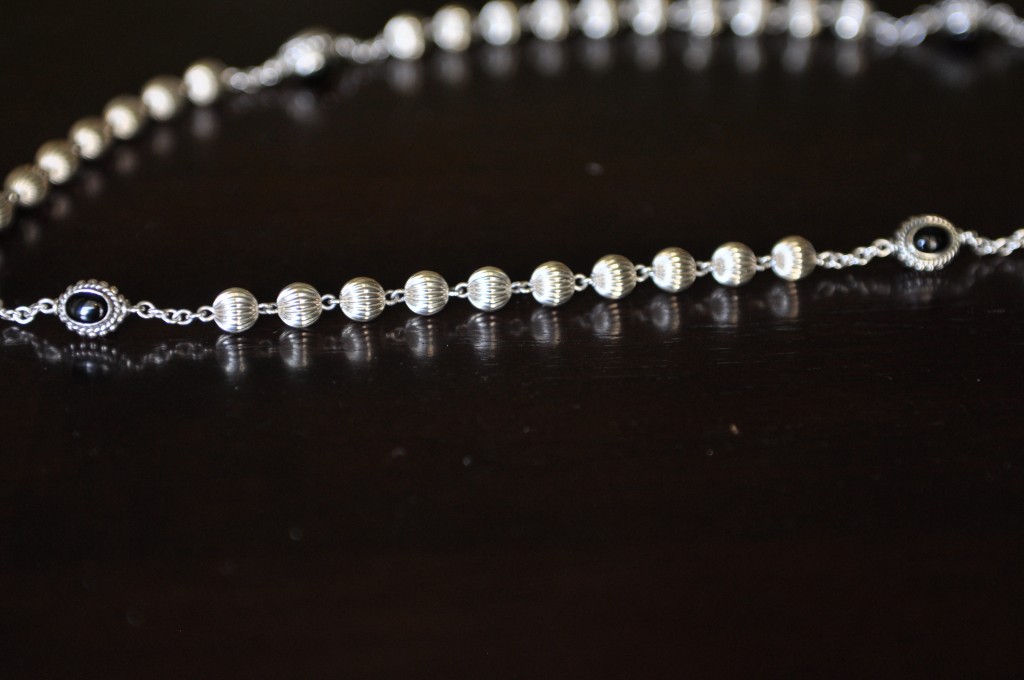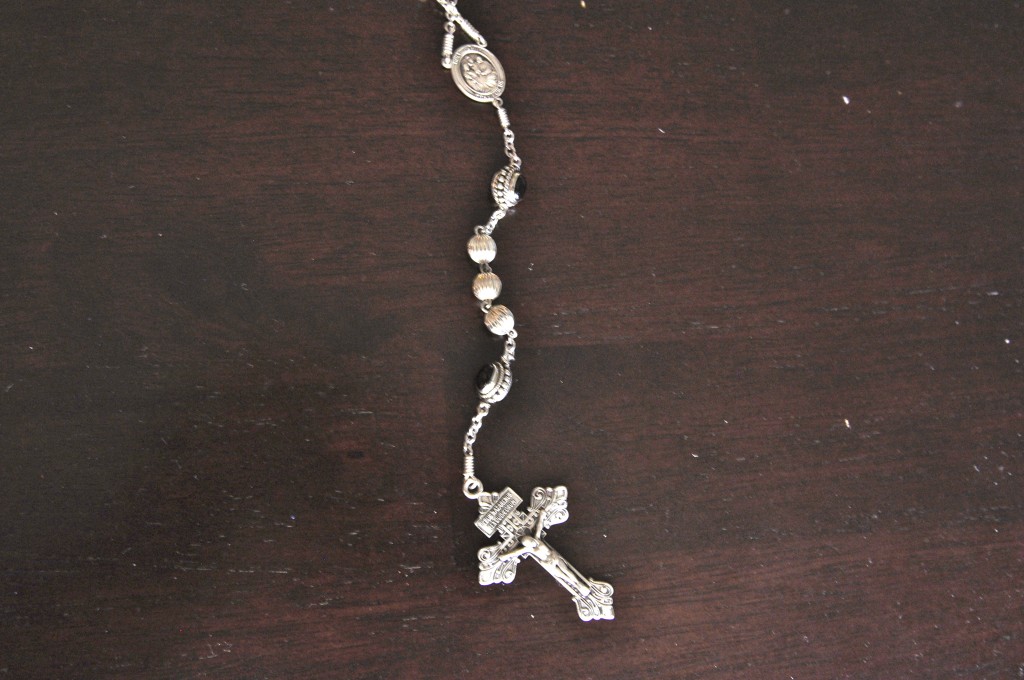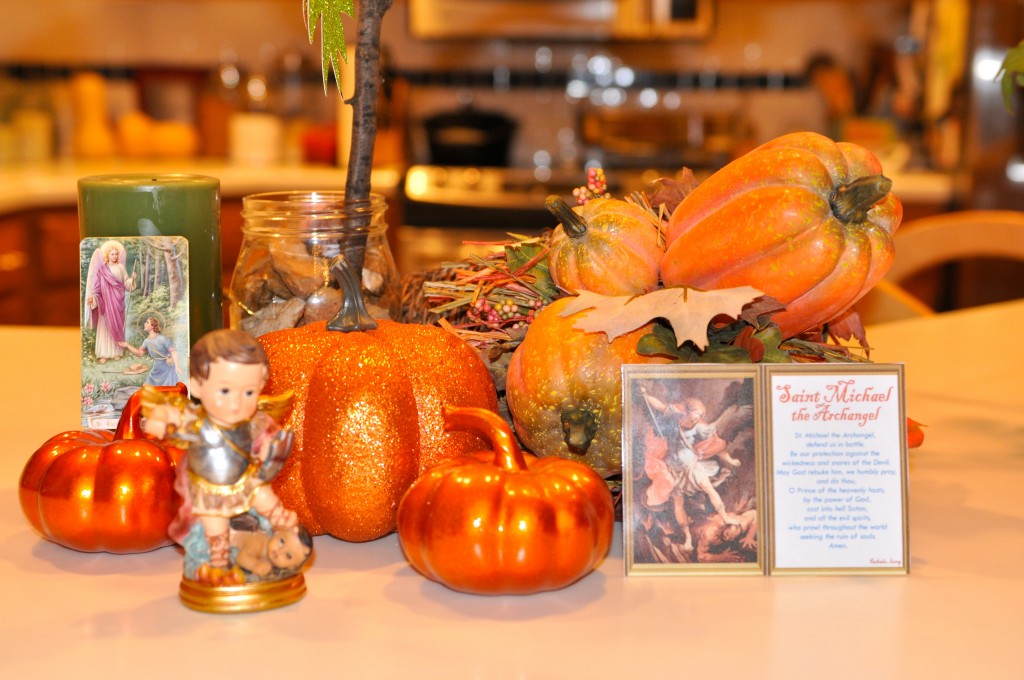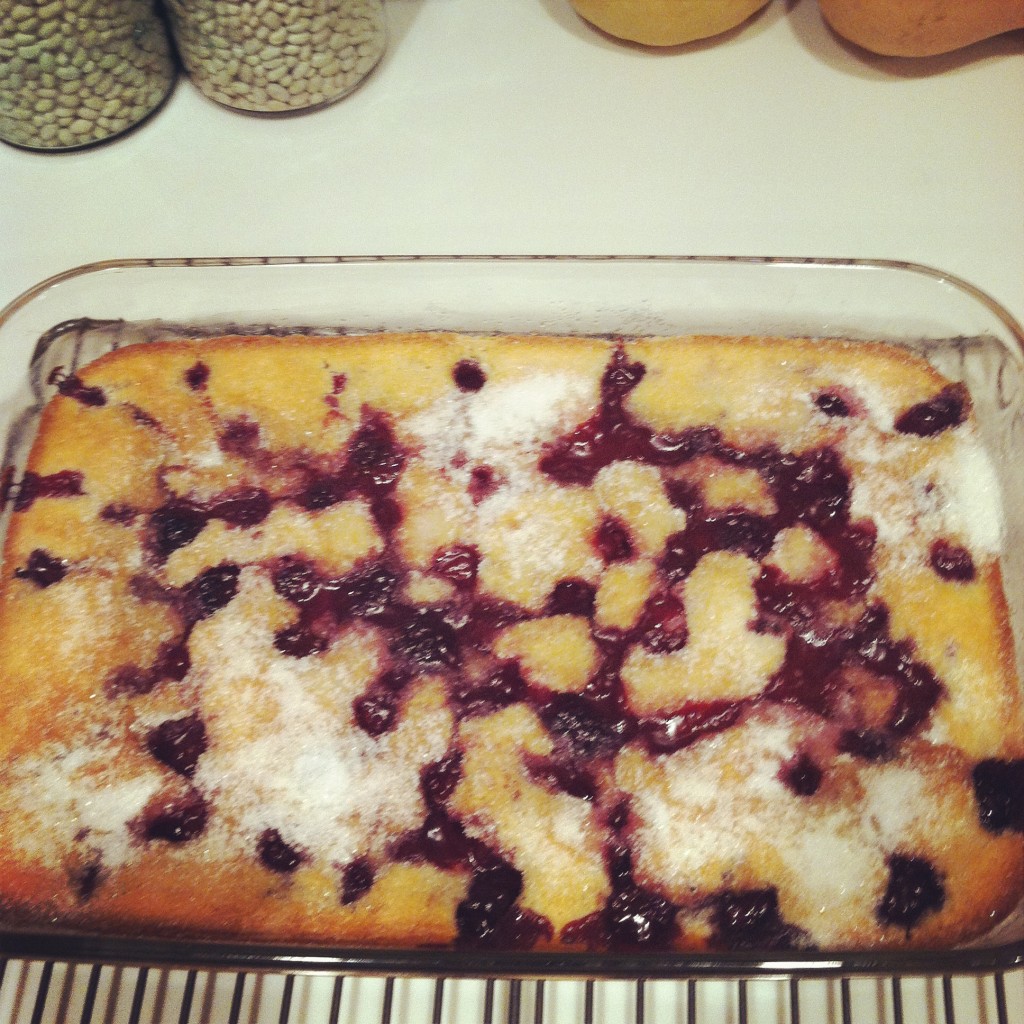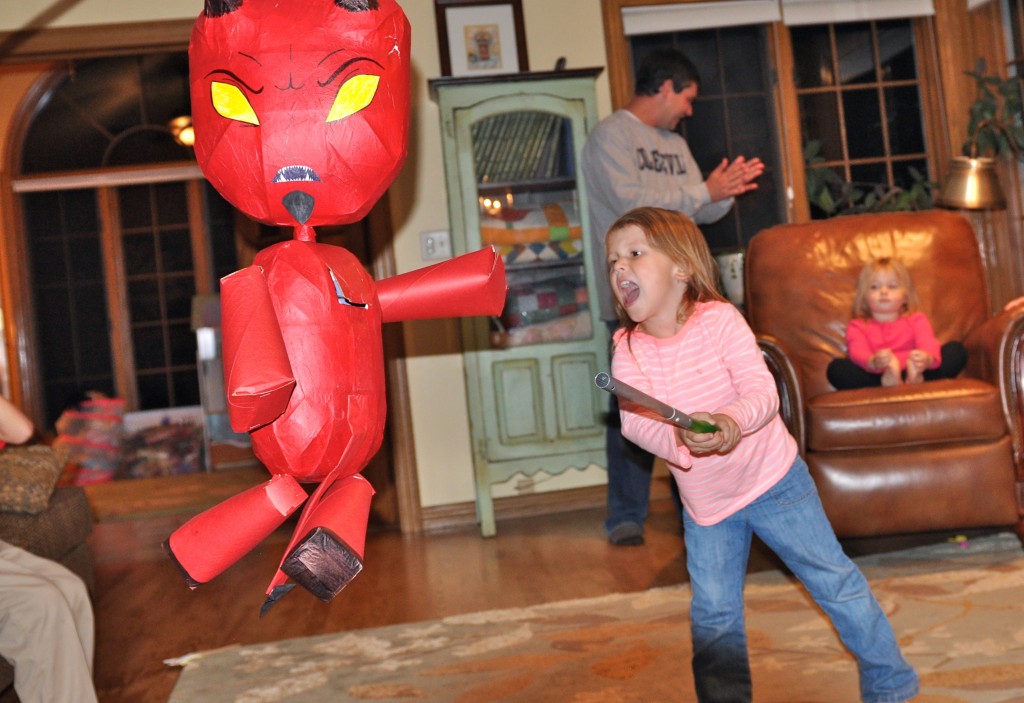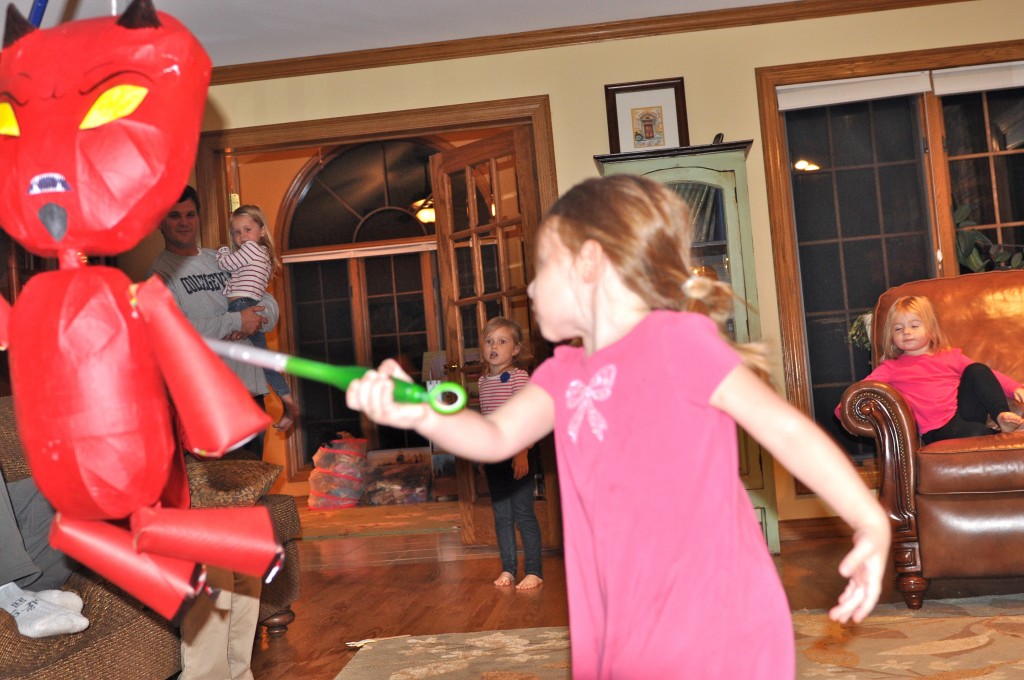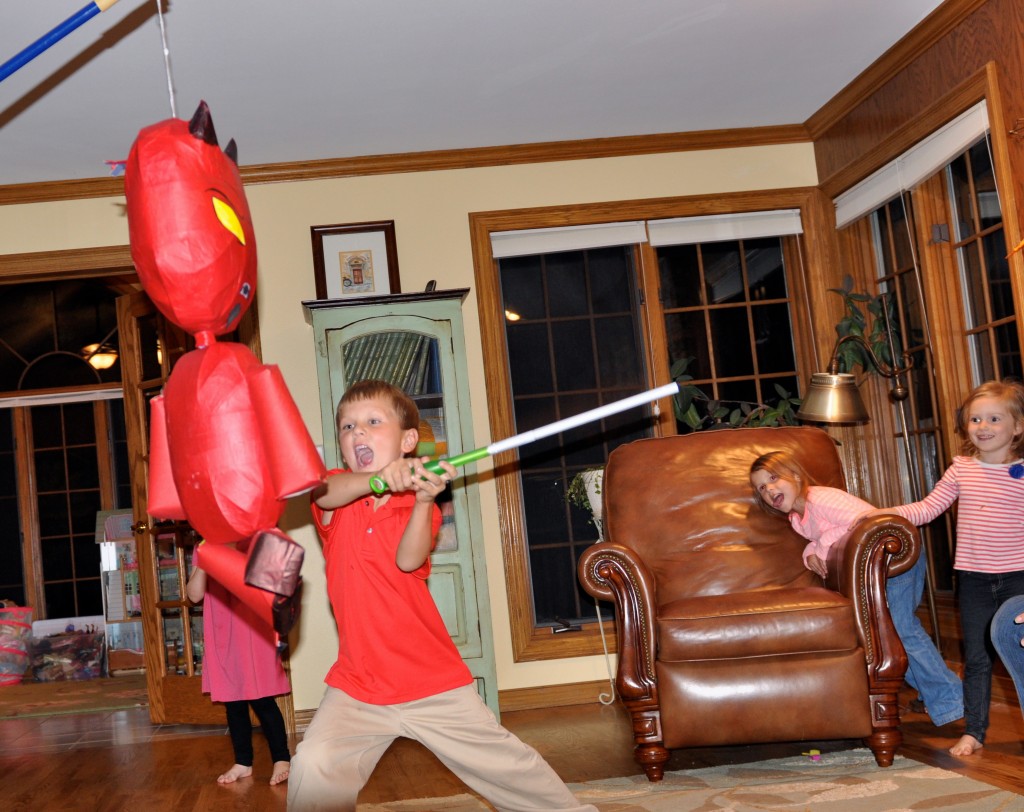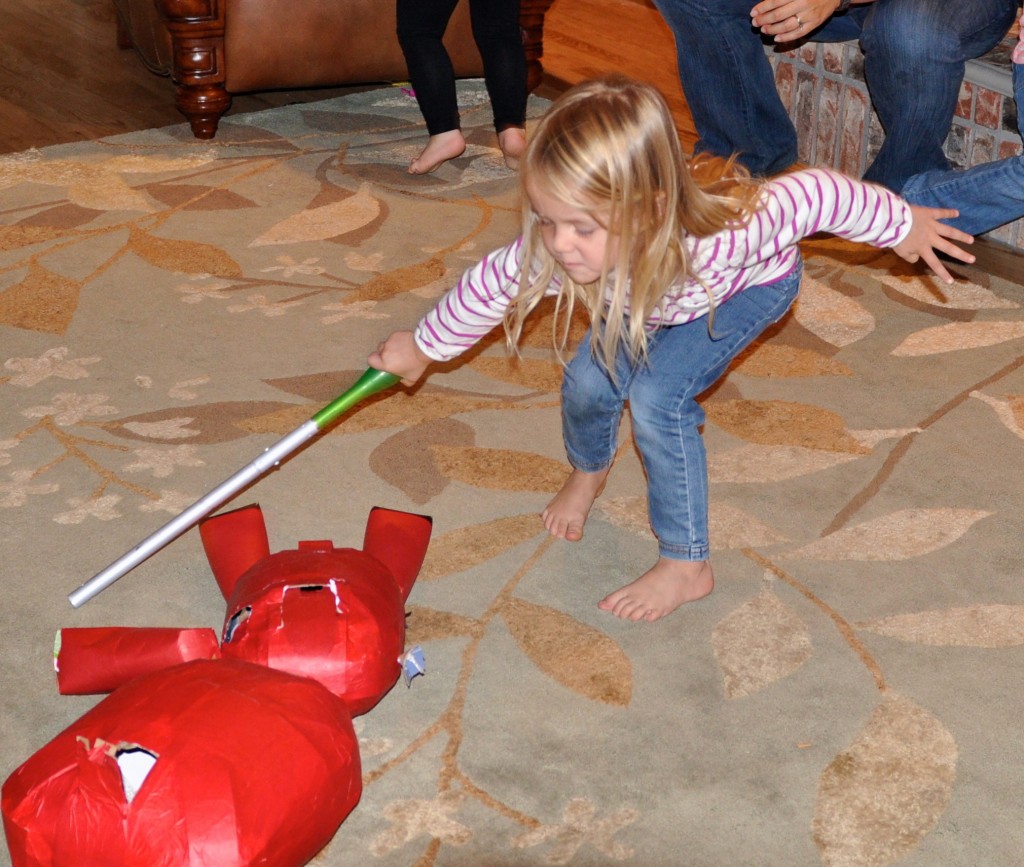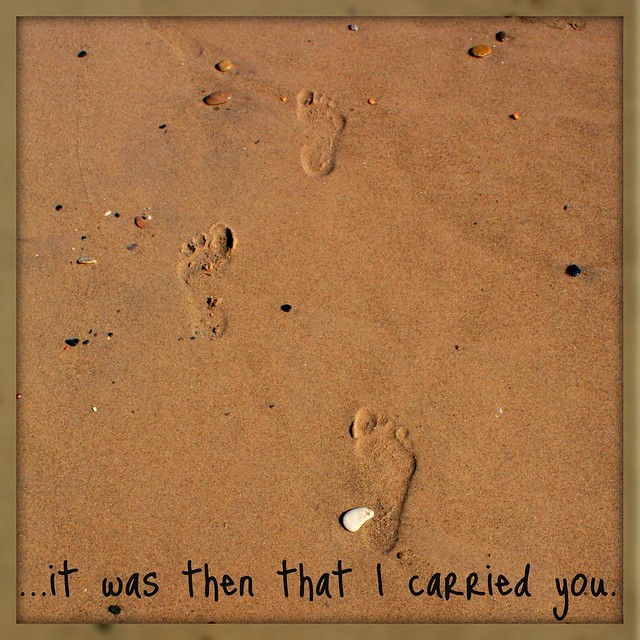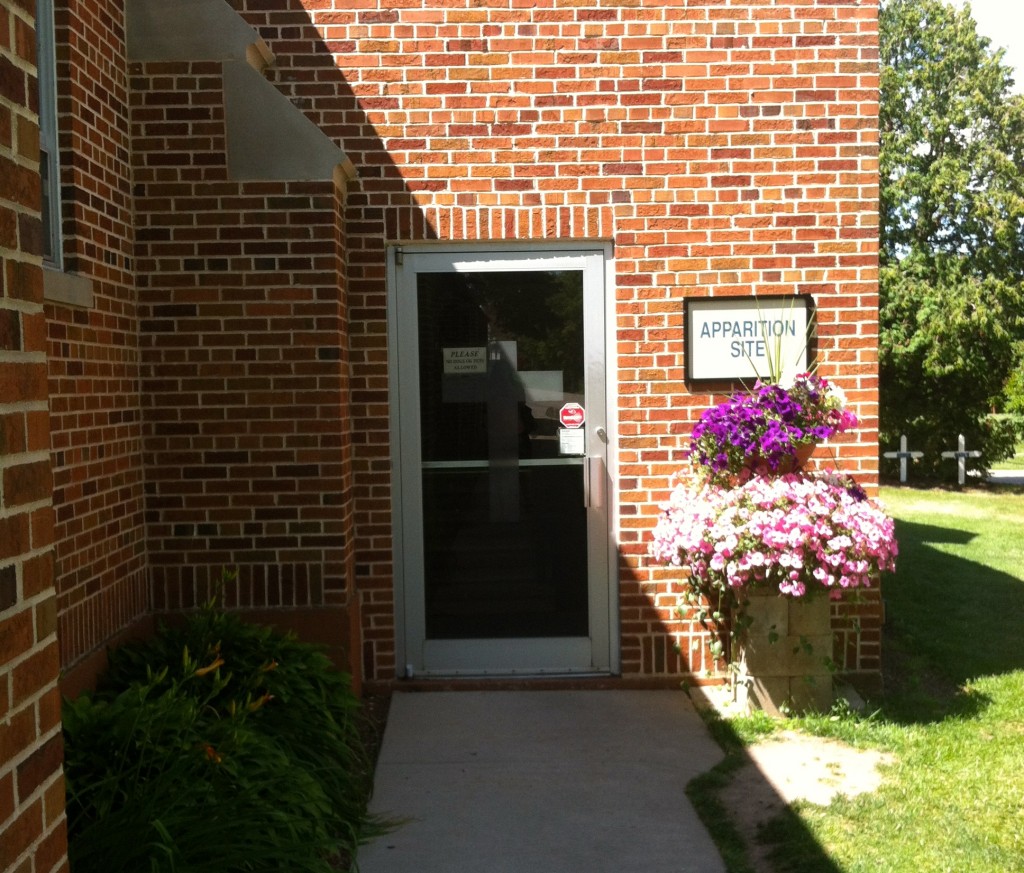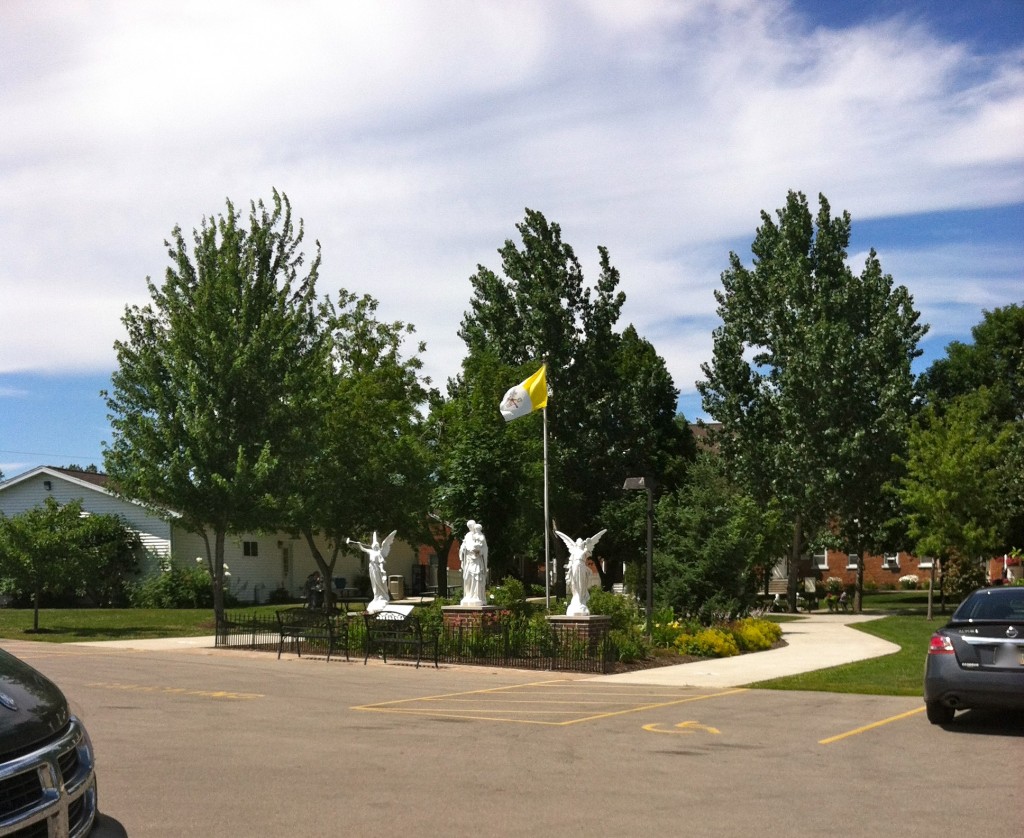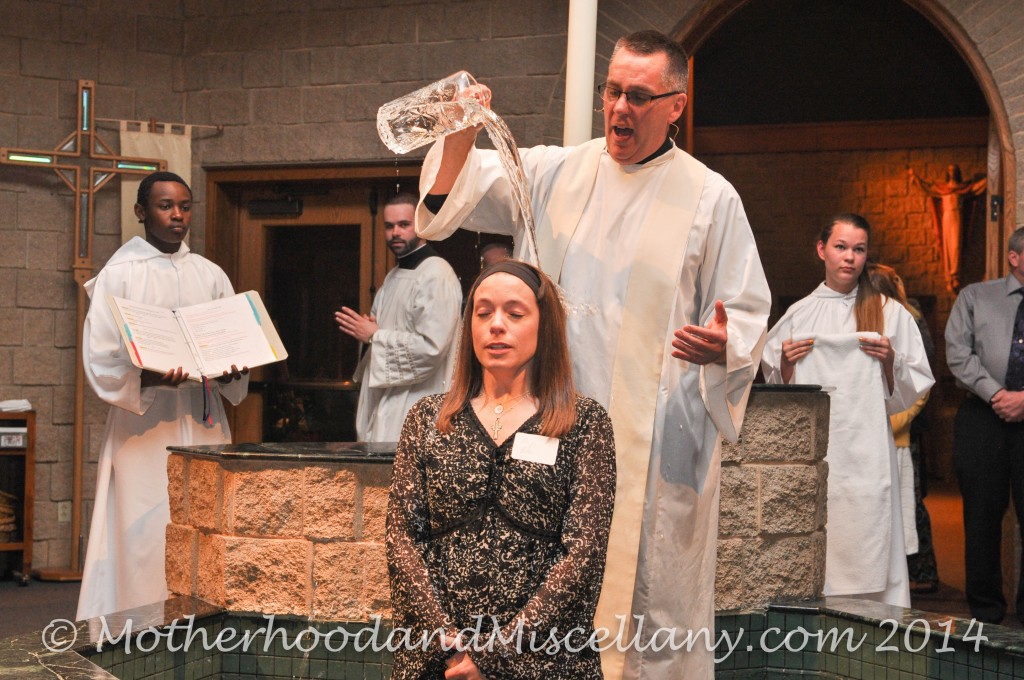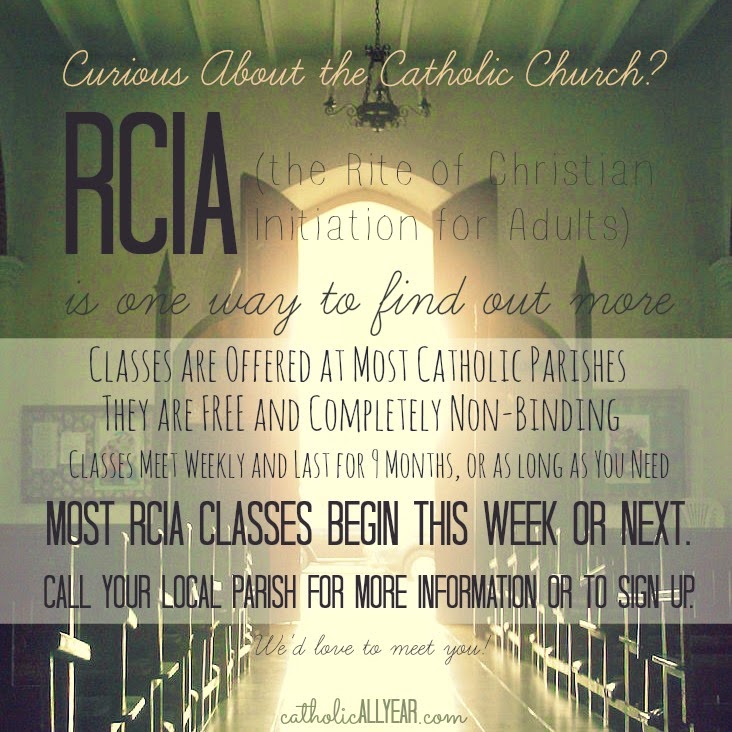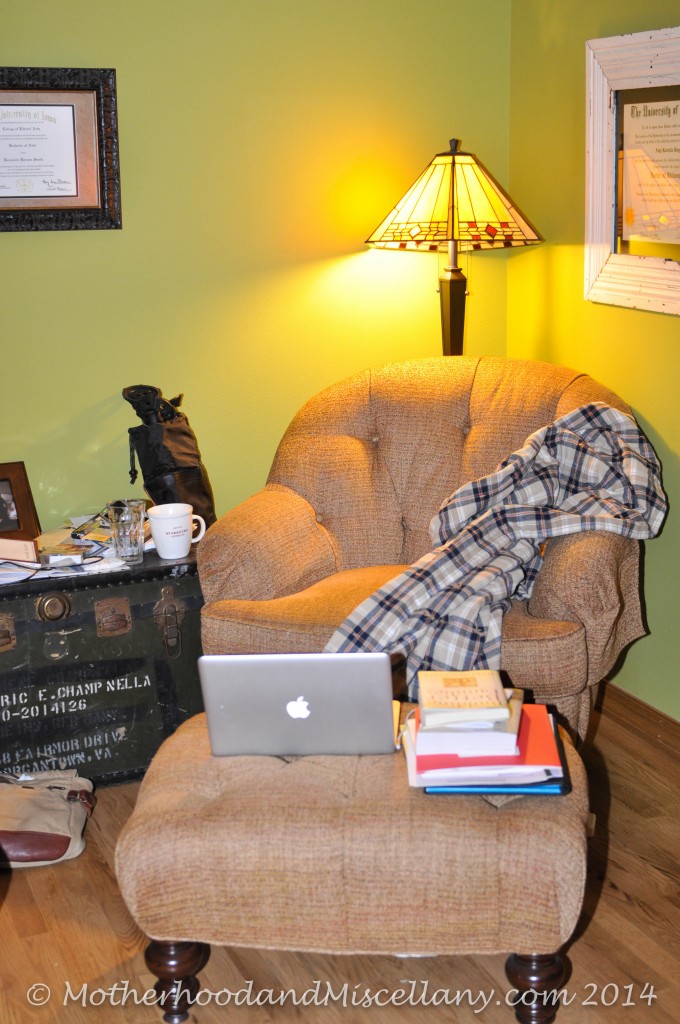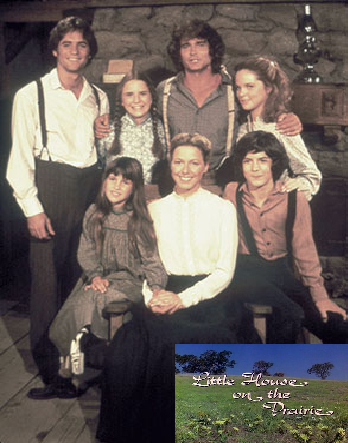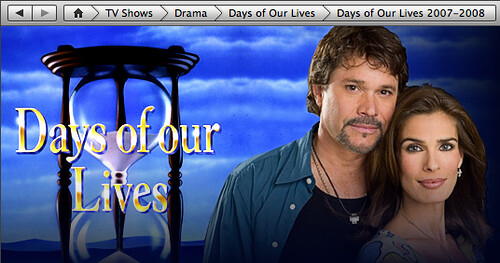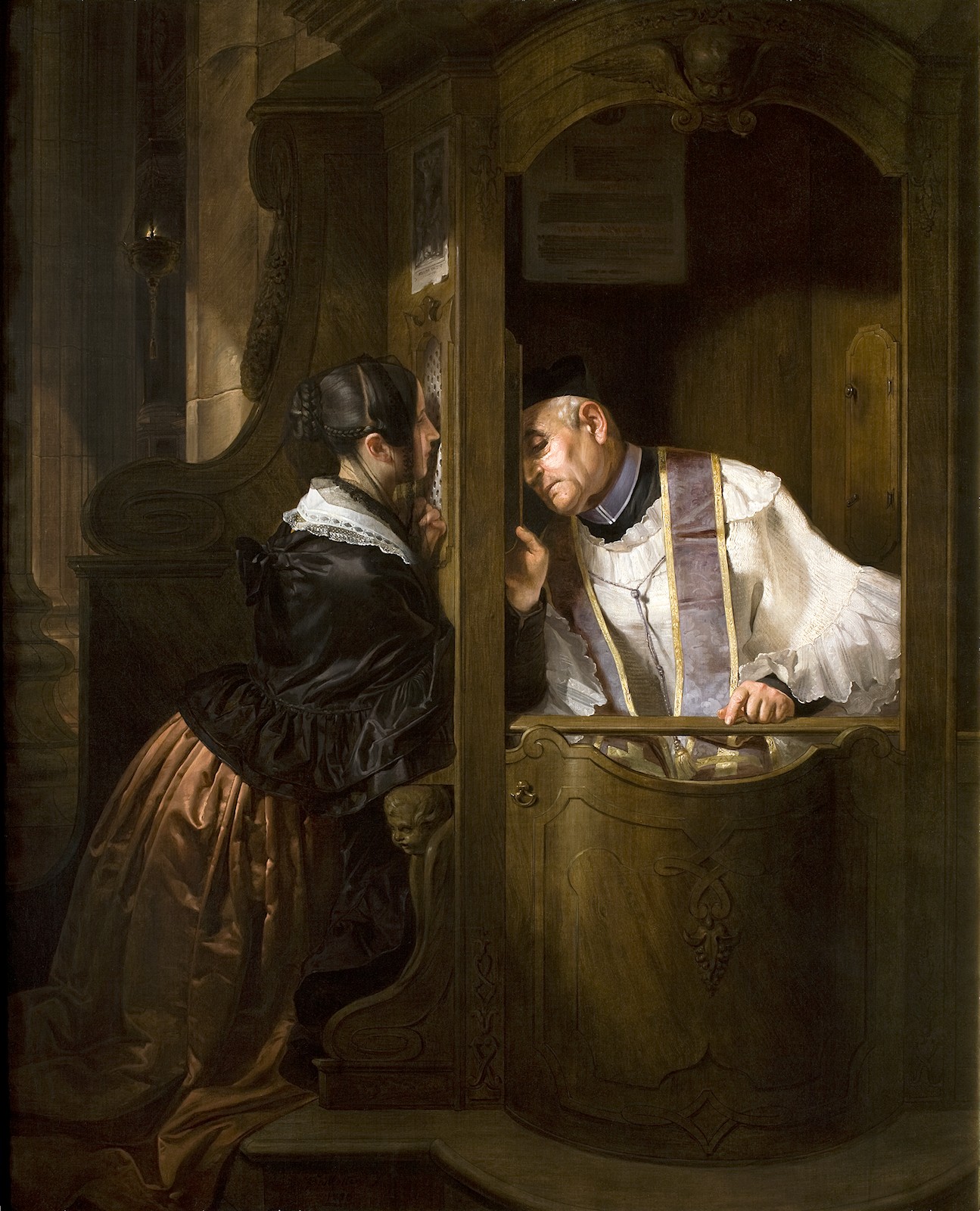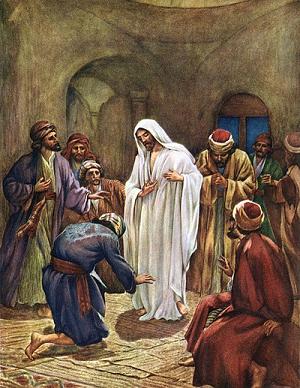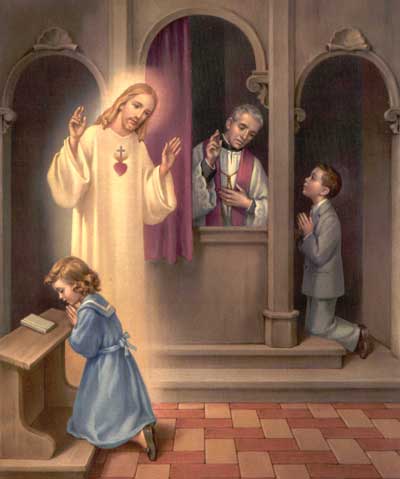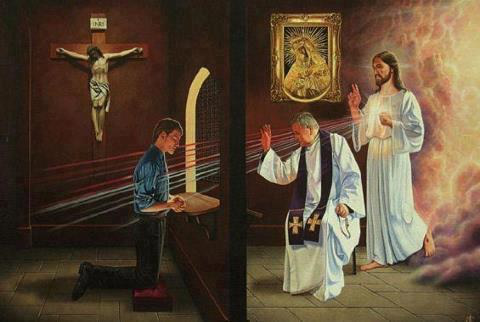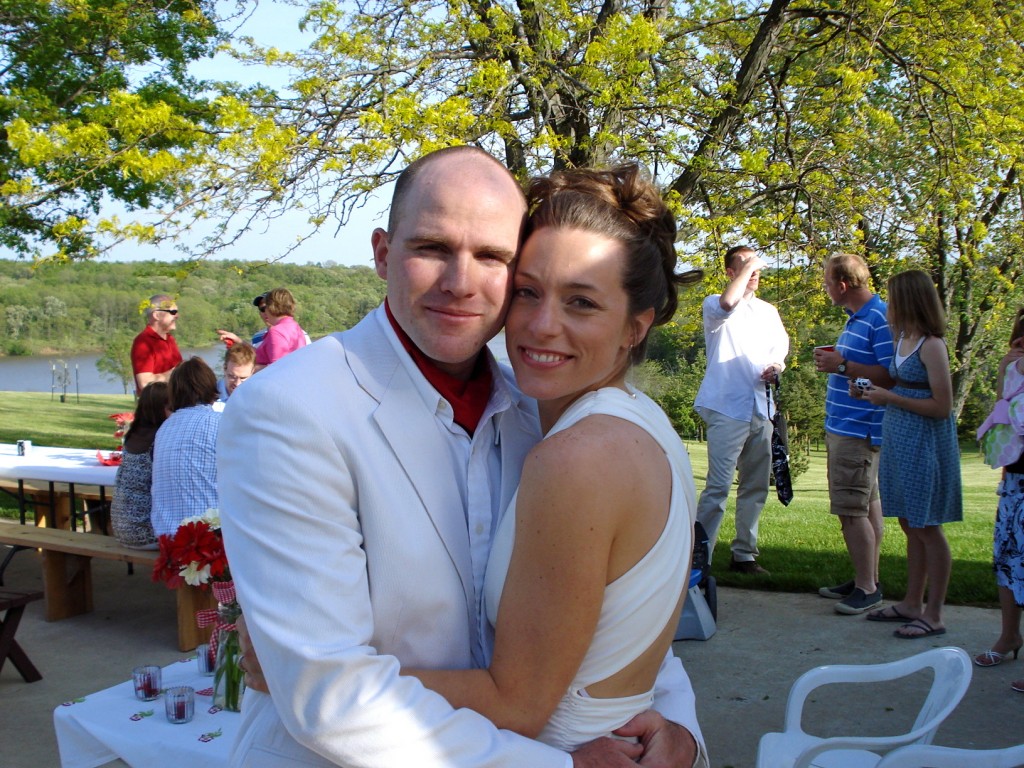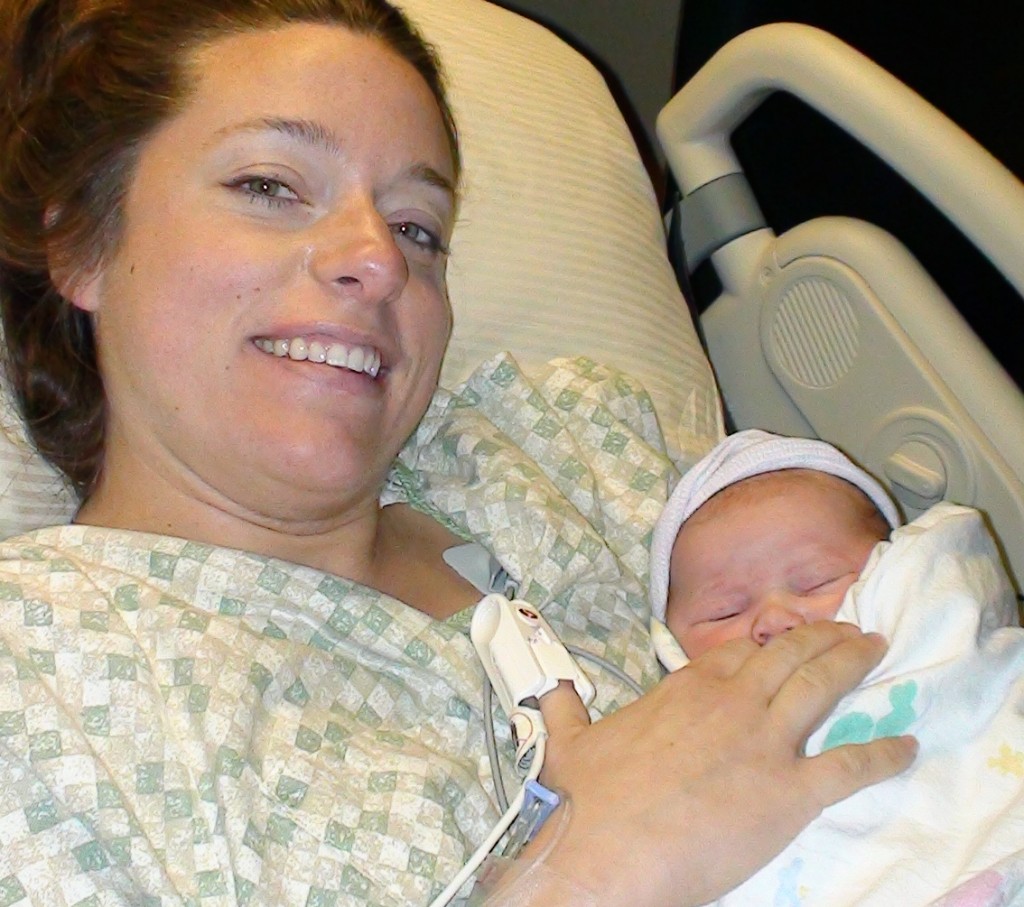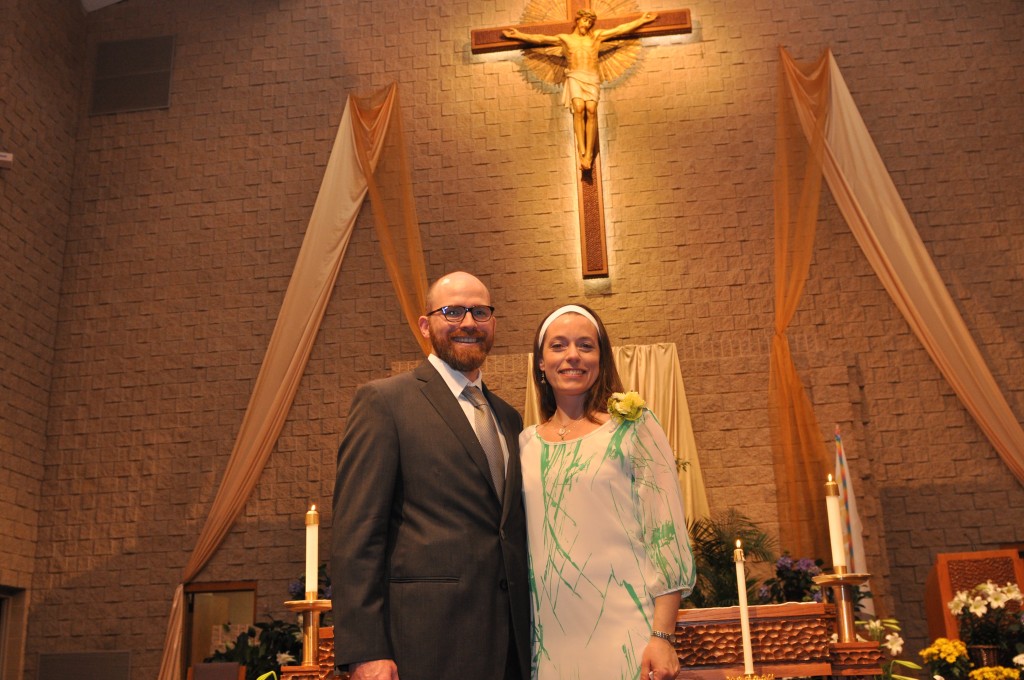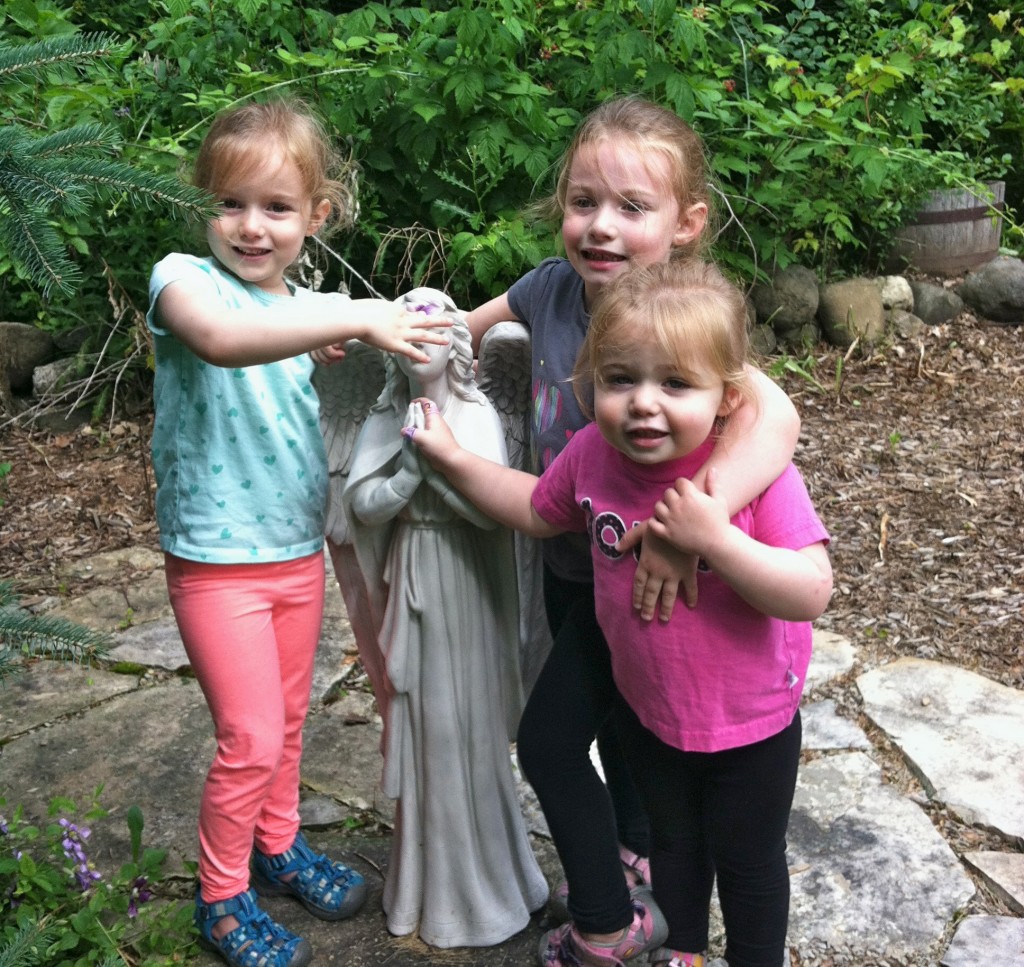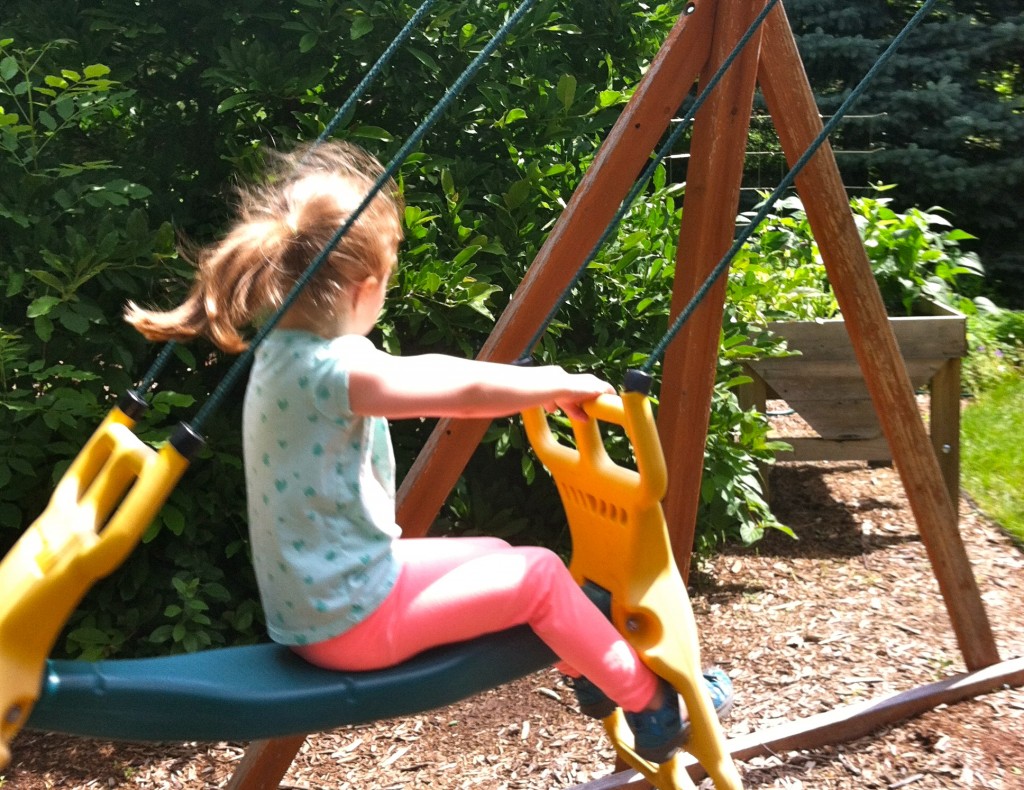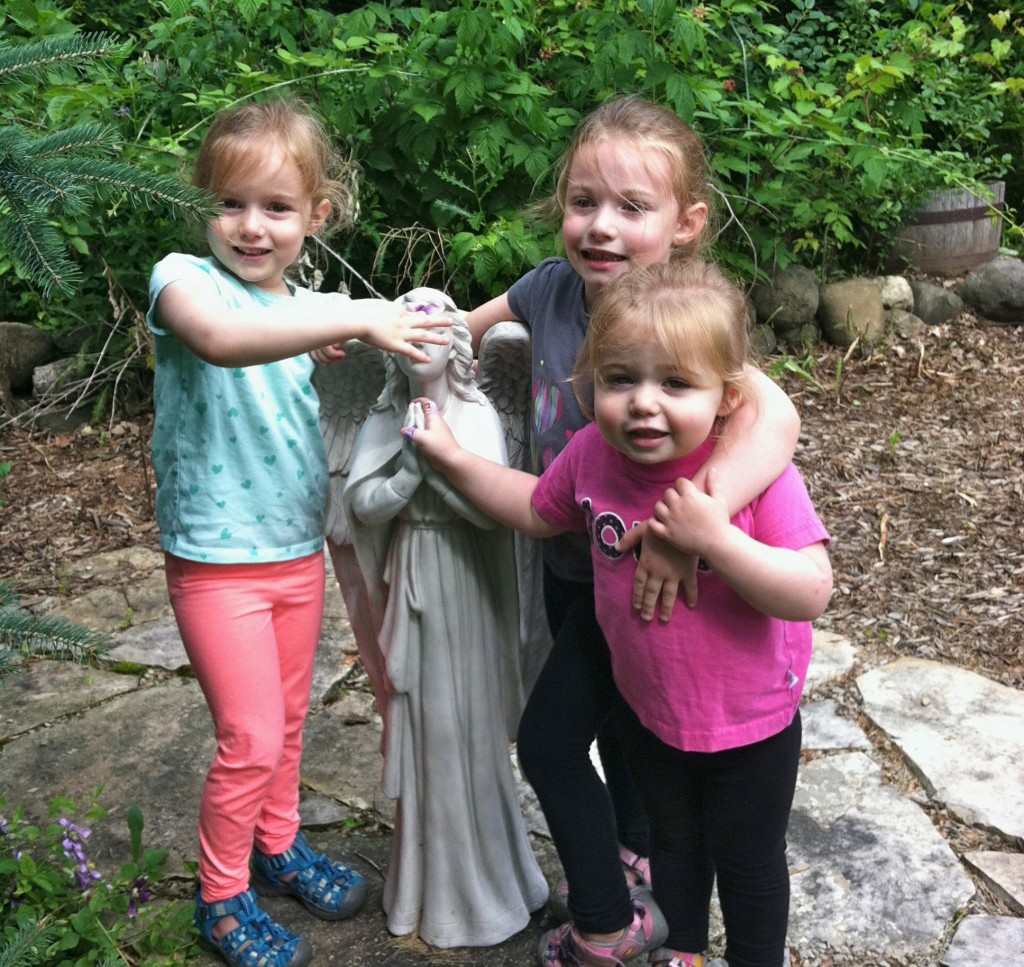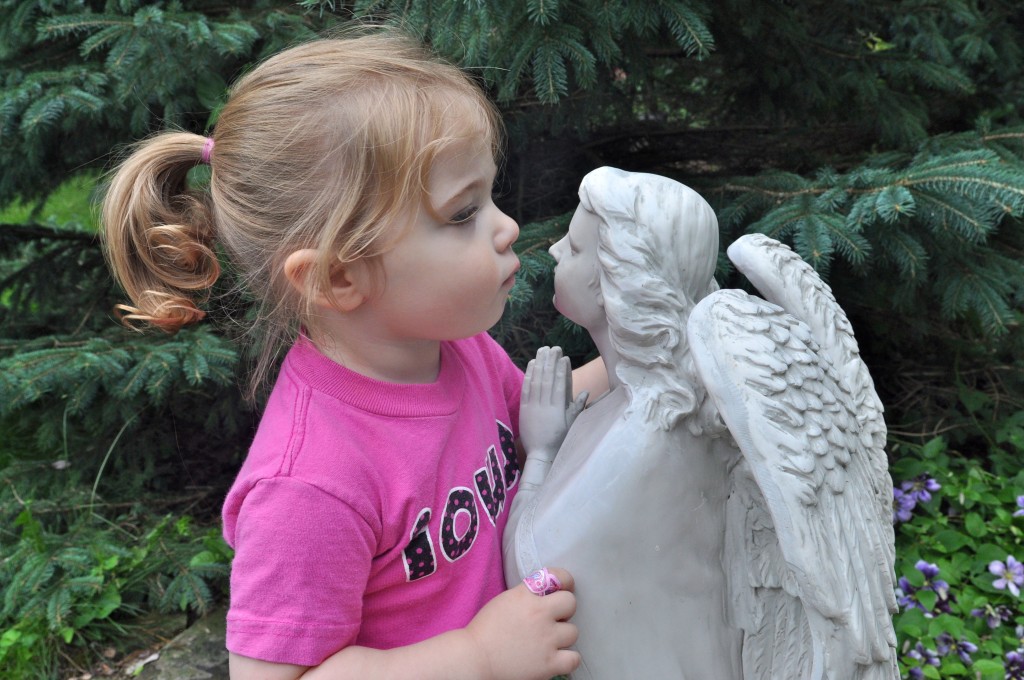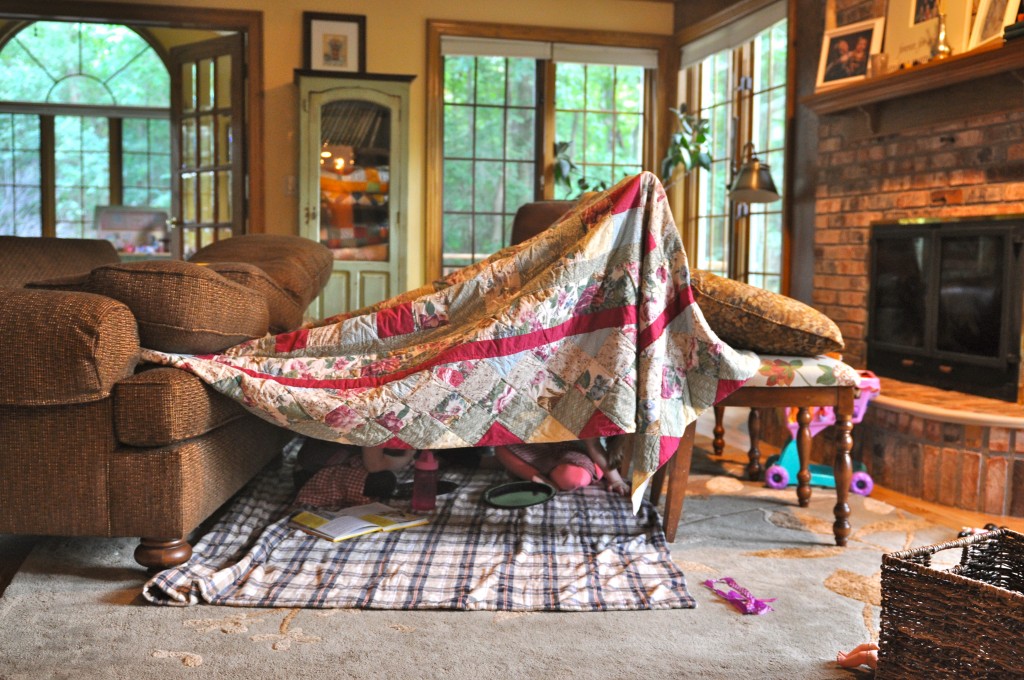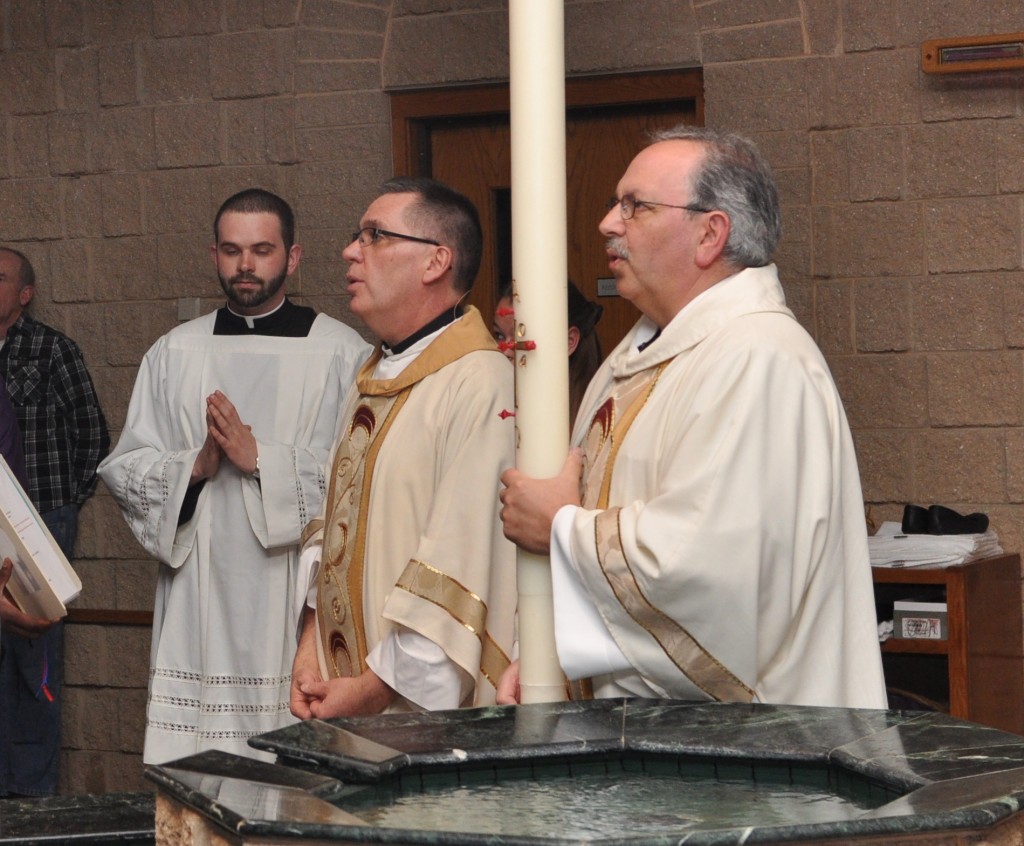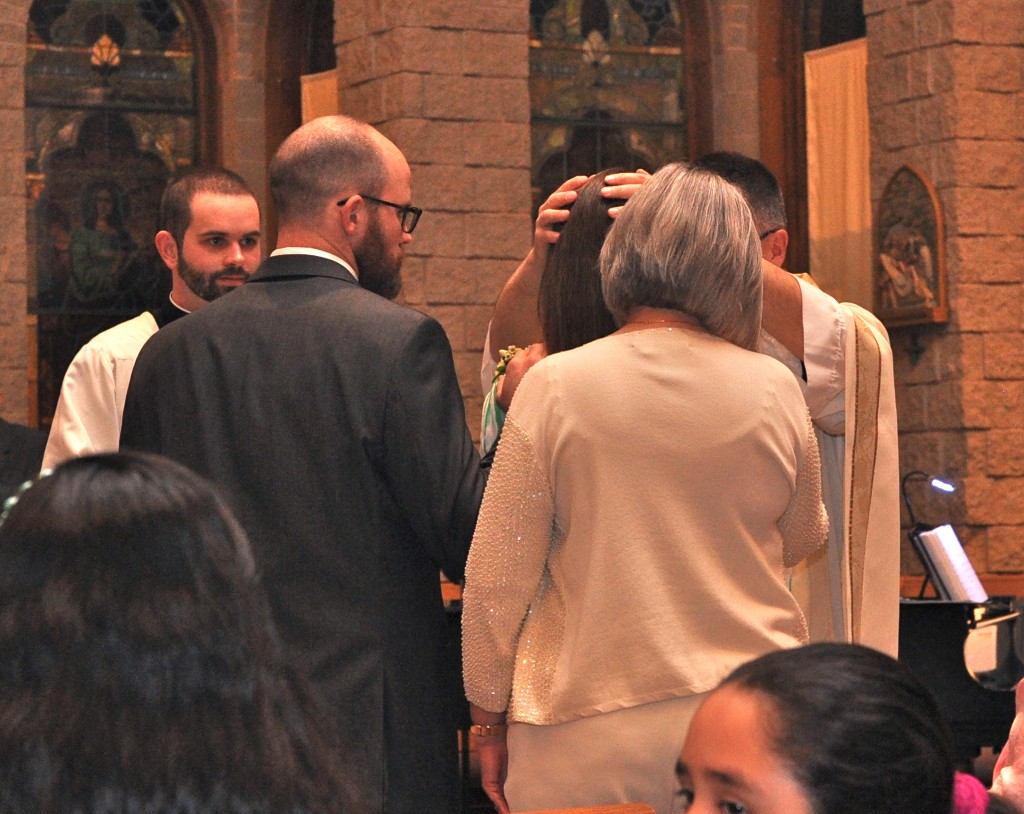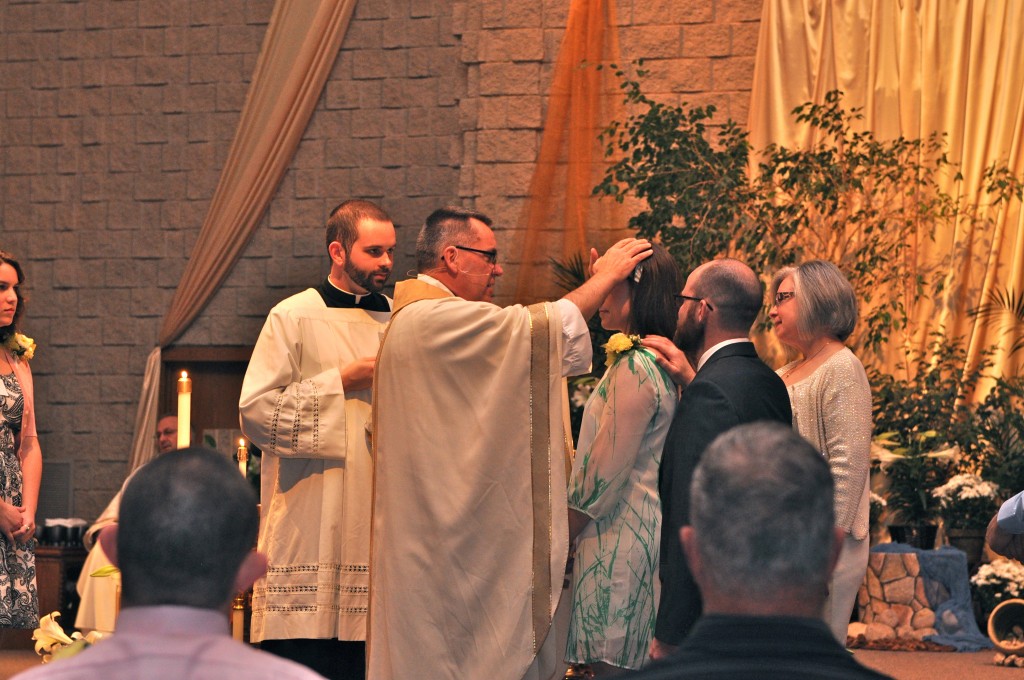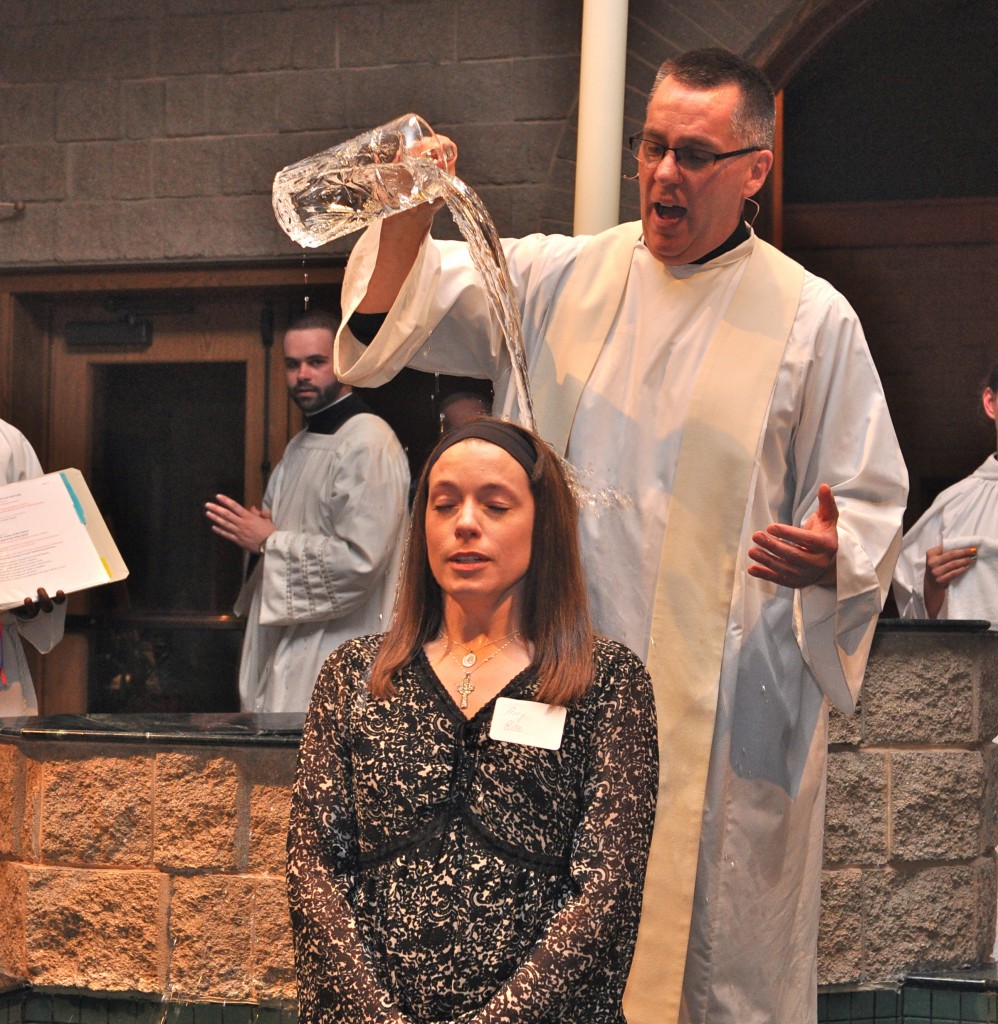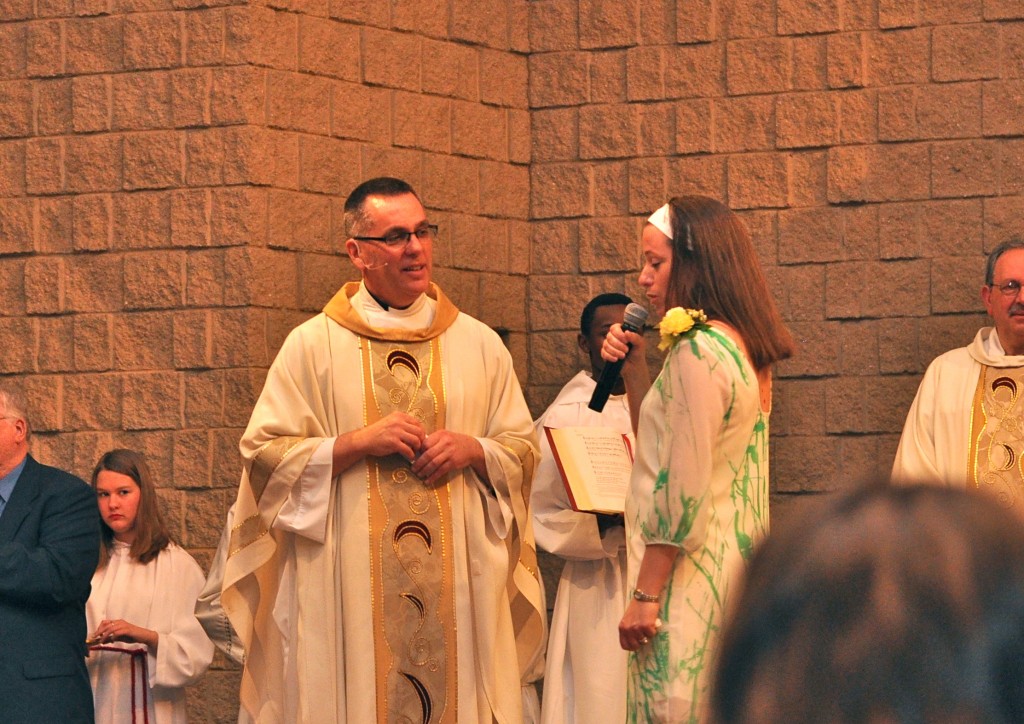Today is the feast of Our Lady of the Rosary, and October is the month dedicated to the Holy Rosary. When I was chatting with a friend of mine the other day, who is in the process of reversion to the Catholic Faith, she mentioned that she is eager to learn about the rosary so that she can begin praying it herself. So I’m bringing back Baby Catholic Answers All the Things (sorry, it’s been a while!) with a post all about this beautiful devotion.
The rosary has a long tradition in the Catholic Church. You can read a history of the devotion here. It is made up of five decades of repeated prayers, Hail Marys separated by Our Fathers, used to meditate on sets of mysteries.
So, what does that actually mean? Using sets of prayers, called decades, to meditate on sets of mysteries? Wha?? Why the repetitive, memorized prayers? Why the devotion to Mary?
Let me break it down. First of all, you can read my Baby Catholic Answers post on Marian devotion here. In a nutshell: Catholics don’t’ worship Mary. The rosary is not a way to worship Mary. One of the people in my RCIA class from last year had been staunchly anti-Catholic before converting from Protestantism. She began praying the rosary during Lent and asked during class one week, “What is the deal with all these prayers to Mary? Why am I praying to Mary??” My answer to her was something like this, “The rosary is not so much about praying to Mary as it is about growing in our understanding of and faith in Jesus. The mysteries are almost all about Jesus, not Mary. Mary always leads us closer to her Son.”
Let me back up just a bit more here to explain how the rosary works and what a “mystery” is in this context. First, how the rosary works:
If you pick up a rosary, you will see a loop of beads with a tail coming out from it. At the end of the tail is a crucifix.
Above the crucifix, on the tail, there are five beads. First is an “Our Father bead.” Our Father beads are sometimes different from most of the beads on the rosary, and sometimes they’re just separated by more chain. The next three beads are “Hail Mary beads.” Then there’s a space and another Our Father bead, followed by the joiner (I think that’s what it’s called). The joiner can differ from rosary to rosary. One of mine has a Holy Family medal, another has an Ave Maria thingy (see below).
^ This one is an example of a rosary where the beads are all the same but the Our Father beads are separated from the Hail Mary beads by more chain.
Looking more closely at the beads on the loop of the rosary, you can see that there are groups of ten Hail Mary beads, called “decades,” that are separated from each other by Our Father beads.
So to pray the rosary, you start on the crucifix and say the Apostles Creed. Then you move to the first Our Father bead and say. . . an Our Father. Then three Hail Marys on the Hail Mary beads. On the the chain between the last Hail Mary and the next Our Father bead, you say a Glory Be. Then on the final Our Father bead, announce the first mystery, then say the Our Father.
Then you move to the first set of ten Hail Mary beads and say ten Hail Marys. When you get to chain before the second Our Father bead, say the Glory Be and the Fatima Prayer (I’m not sure if some people maybe don’t do this last one?), then move to the next Our Father bead, announce the second mystery and say the Our Father, then pray the next decade of Hail Marys. And it goes the same way through all five mysteries and five decades until you get to the last Fatima Prayer. After the last Fatima Prayer, on the joiner, pray the Hail Holy Queen. Then to conclude there is another prayer, but I’m not sure what it’s called. Most sites I looked at included it at the end of the rosary, but I haven’t seen a name for it. It goes like this:
Oh God, whose only begotten Son, by his life, death, and resurrection, has purchased for us the rewards of eternal life, grant we beseech Thee that, meditating upon these mysteries of the most Holy rosary of the Blessed Virgin Mary, we may imitate what they contain, and obtain what they promise, through the same Christ our Lord, Amen.
So that’s the sequence of praying the rosary. But you may be wondering what in the world are these mysteries I keep referring to, and why so many prayers repeated over and over?
The answer is meditation.
The rosary isn’t so much about the prayers, as it is about meditation. The prayers are repeated over and over because most Catholics can say Our Fathers and Hail Marys and Glory Bes without needing to think about them, freeing their minds to meditate on the mysteries. The rhythmic nature of the prayers actually facilitates the meditation. And what we meditate on are the 20 mysteries of faith.
For centuries, there were 15 mysteries included in the rosary, grouped into three sets of five.
The Joyful Mysteries (prayed on Mondays and Saturdays):
- The Annunciation
- The Visitation
- The Nativity of Jesus
- The presentation of Jesus
- The finding of Jesus in the Temple
The Glorious Mysteries (prayed on Sundays and Wednesdays)
- The Resurrection
- The Ascension
- The descent of the Holy Spirit
- The Assumption of Mary
- The crowning of Mary as Queen of Heaven
The Sorrowful Mysteries (prayed on Tuesdays and Fridays)
- The agony in the garden
- The scourging at the pillar
- The crowning with thorns
- Jesus carries the cross
- Jesus is crucified
In October 2002 Saint John Paul II (is he referred to as Saint John Paul the Great now?) added the Luminous Mysteries (prayed on Thursdays):
- The baptism of Jesus
- The wedding at Cana
- The proclamation of the Kingdom
- The transfiguration
- The institution of the Eucharist
When you pray the rosary, you meditate on the days’ mysteries, each for the duration of a decade.
^ Someone else around here really likes my rosaries and chaplets.
To sum it all up, when I pray the rosary today, it will go like this:
- I will make the Sign of the Cross
- I’ll say a short prayer stating my intentions for the rosary (i.e. I offer the rosary for the intention of my children, my husband, my godson, a sick friend, etc.)
- The Apostles’ Creed
- The Our Father
- Three Hail Marys
- The Glory Be
- Since today is Tuesday, I will then say, “The first Sorrowful Mystery – The agony in the garden.”
- Then I will pray the Our Father
- Ten Hail Marys
- The Glory Be
- The Fatima Prayer
- I will do 8-11 all while focusing my thoughts on Jesus’s agony in the garden. This is the meditation part. I’ll try to think about how He felt, remember what He went through, imagine myself in that situation, etc. I’ll try really hard to stay focused, but sometimes (often!) my mind will wander. I will repeatedly bring my thoughts back to Jesus in the Garden.
- I’ll repeat these steps for each of the other four Sorrowful Mysteries.
- I’ll pray the Hail Holy Queen
- Closing prayer (above)
- Sign of the Cross
If you pray the rosary frequently, you are repeatedly meditating on all of Salvation history, all of the mysteries of our faith. It covers Jesus’s conception and birth, high points of His childhood and His adulthood as He spread the gospel and performed miracles, His Passion, death, resurrection, ascension into Heaven, and His sending down of the Holy Spirit.
I really love praying the rosary. It is so beautiful and such a fulfilling way to pray. I highly recommend it.
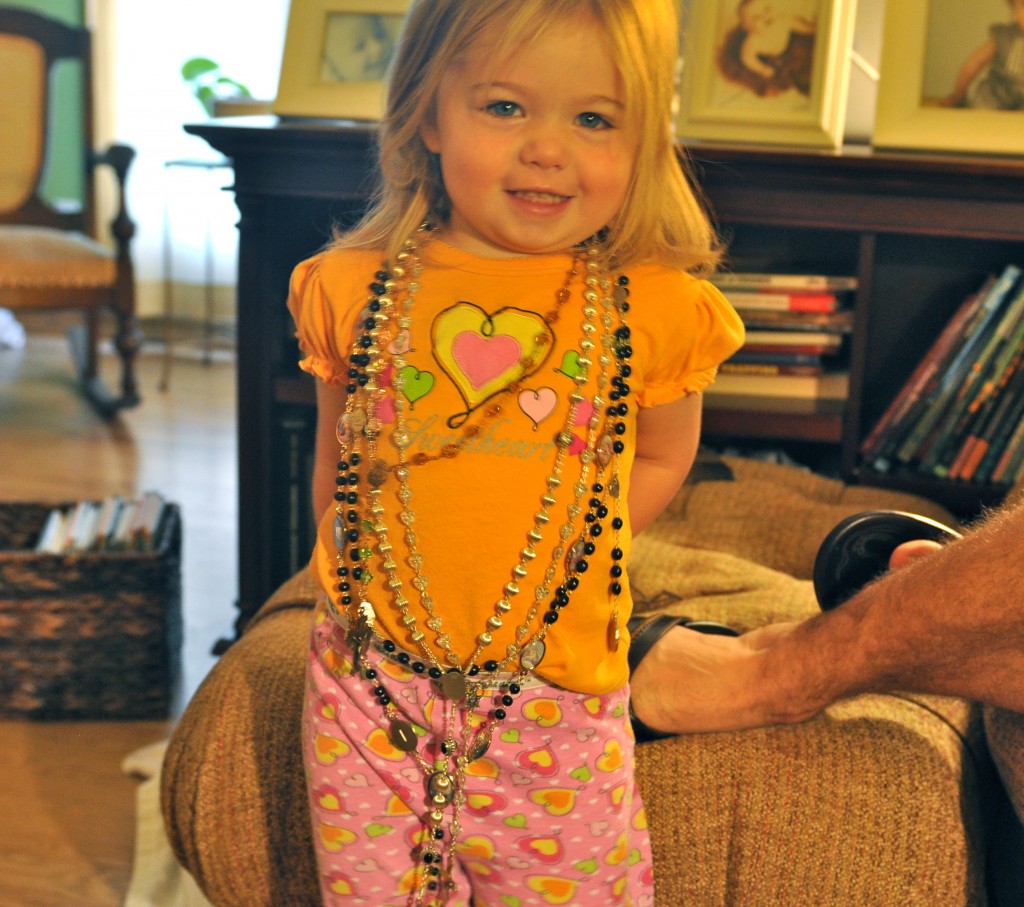 ^ Only two of those are rosaries, the others are chaplets (Seven Sorrows, Stations of the Cross, and Hannah’s Tears)
^ Only two of those are rosaries, the others are chaplets (Seven Sorrows, Stations of the Cross, and Hannah’s Tears)
Happy Feast of Our Lady of the Rosary!


